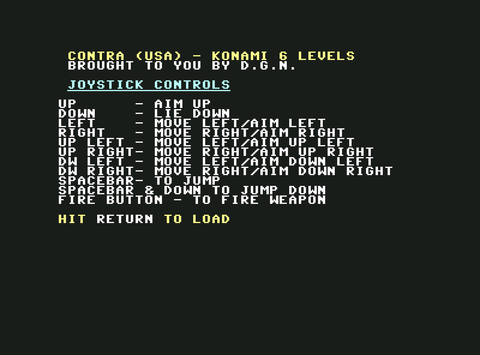Hop to the top with Murtop!
Ribbity rabbity boo! What happens when carrot-hungry moles invade the world? Who's gonna save the day? We believe it's going to be Murti!

Mega Cat Studios had the amazing chance to interview Xavi Gomez the Producer of the up-and-coming fast-paced arcade game Murtop! Count your coins and get ready to hop as we check the development of the game!
How was this game born?
Murtop was born in 2019. But before being a game, it was an arcade cabinet which I built from scratch in my spare time, from 2015 to 2018, to play old arcade games. The name Murtop comes from “Murti” (a bunny that my partner and I had) and “Bartop” (an arcade cabinet without the base, or pedestal, which was the model I was building). Once I had the cabinet built, I decided that I wanted to create my own game to play on it, and that’s when Murtop, the game, was born.

What was development like?
Murtop was a hobby for me for almost 3 years. I was working from time to time, at night, on the weekends, mostly getting used to Godot (the game engine I use). Basically, I was just having fun learning about everything related to game development while creating a game. I didn't have in mind publishing at all. I was casually posting my journey on Twitter and Reddit and people seemed to like it, which encouraged me to keep going. But in a drastic turn of events (in a good way!), Flynn's Arcade, my publisher, contacted me in the summer of 2022 and they offered me a deal to publish Murtop.

From this point onward, I could say I turned into a "serious game developer" by force. First of all, Murtop didn't have any music nor sfx and I also needed some promotional art and such, so I hired a professional musician and an artist to help me. Now, I only had to finish the game, hehe! And having a full-time job, managing game development, work, family, hours of sleep... The last few months of development were challenging. But I made it through and now Murtop is going to be a reality!
What did you learn about yourself through this game?
That I need to learn to focus. Do one thing at a time, and do it properly. I tend to do multiple tasks at once and it nevers ends well. I also learned that I’m actually capable of creating pixel art, which was a new thing for me.
What makes this game special?
It’s a new take on the 80’s arcade games. It has more pace, better playability and controls. It’s also designed and programmed having in mind the restrictions those games had, so it could be easily ported to actual older systems. Murtop can run natively on a "potato computer" (e.g. a Raspberry Pi).
How does sound play a role in the game?
Sound is crucial in Murtop. Thankfully, Valen Haralambidis, a great musician, helped me with the music and sfx. He designed the whole sound to be resemblant of the old arcade sounds but with a modern twist. This type of games rely a lot on sound because the graphics are kind of basic.
What games influenced this one the most?
Murtop is mostly based on Dig Dug and Bomberman. I took the digging and killing subterranean enemies with rocks from Dig Dug and the bombs and their explosions in multiple directions from Bomberman.


Any fun stories or wild moments during development?
I would say that the wildest moment was when Flynn’s Arcade contacted me. I was in my bed, ready to go to sleep, scrolling through Twitter, when I received a DM asking if I would like to publish Murtop on the Nintendo Switch. I just couldn't believe it! First of all, someone wanted to publish my game, which was bonkers, and secondly, on none other than on a Nintendo console, which are the consoles I grew up playing with.

Do you think preserving older gameplay mechanics in new games is important?
Yeah, I think it is important because usually older gameplay mechanics are easy to understand and the players can pick up and play the game more quickly. But preserving older gameplay mechanics doesn't necessarily mean that new games can't introduce new mechanics or innovate in other ways or mix them with older ones. This can lead to a more enjoyable and satisfying gaming experience.

What's your favorite memory as a gamer?
In terms of arcade games, I remember fondly playing Pang and Puzzle Bobble with my father in the bar next to my childhood home. I spent so much money on it! I also remember having a blast playing multiplayer games with my friends, such as Age of Empires, Warcraft, and StarCraft. We also liked to gather to play GoldenEye 007, Perfect Dark, and later on, TimeSplitters 2.

Who will enjoy this game the most?
I believe that everybody will enjoy Murtop, but I think people who played arcade games in the 80’s and the 90’s will appreciate it the most.
Bottom line, why must someone play this game?
Because it’s so funny to see a cute little bunny poop bombs!

How do you want this game to be remembered?
I would like Murtop to be remembered as a “classic new arcade” game.
What's next?
I’m in talks with some companies to release Murtop on their platforms. I would love to see a physical release of Murtop and I would also like to have a dedicated “Murtop” arcade cabinet, with a vertical CRT monitor, its own art and controls and so on. So I will do everything that’s in my power to make those things happen.
Anything else you'd like to add?
Thank you all for having me. It’s been a pleasure. Let’s keep arcade games alive!
Check out Murtop on Steam
Check out trailer here:
Follow Hiulit on Twitter, Github, and Youtube to get the latest updates from them! Support them on Ko-fi and Patreon!


























